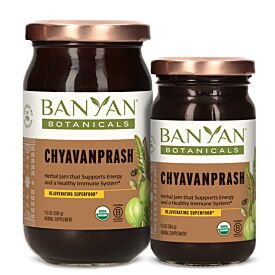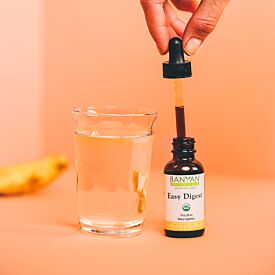5 Things You Can Do to Restore Your Body After a Cleanse
I write about cleansing a lot—it is one of the most profound things I do in my Ayurvedic practice because it provides pretty significant results in a short amount of time.
However, shamana (our daily practices) should not be overshadowed by shodhana (Ayurveda’s purification practices).
Obviously, common sense tells us that after completing a cleanse, jumping into a diet full of chocolate chip cookies, potato chips, and ice cream isn’t a good idea. In fact, most people I work with say that they don’t crave these foods after cleansing and their bodies actually begin to prefer the wholesome foods that support their continued well-being.
Spring cleansing is about clearing away the ama, or toxins, that have built up in the body over the heavy months of winter and stagnated in our GI tract, our joints, our fat cells, and even in our minds.
Once this ama is cleared away and the channels of the body become clear, our senses are likely to be heightened and sensations can feel more intense than usual. Further, the delicate lining of the intestinal tract can be very sensitive as it is cleared out and exposed, possibly for the first time in years.
Keeping this in mind, it is extremely important to take extra care of the mind, emotions, and physical body in the days and weeks following a cleanse.
Rasayana is a Sanskrit word that translates to mean rejuvenation or longevity. Some sources may also translate the word to mean anti-aging. In Ayurveda, this is ultimately the purpose of cleansing—to rejuvenate our bodies and promote longevity.
There are many rasayana practices and foods that are beneficial to add to your daily routine, and the following five things will help you restore your body to full, vibrant health after a cleanse.
1. Nurture Your Agni
In Ayurveda, agni refers to the main digestive fire. Healthy agni means excellent digestion, absorption, and assimilation of nutrients. When we digest our food properly, we are able to generate new, healthy tissues, which therefore promotes longevity and health.
For a simple way to boost agni before meals, take a slice of ginger sprinkled with lemon juice and salt or a very strong cup of warm lemon water about 10 to 15 minutes before you eat.
Alternatively, you can support your digestion by taking an herbal supplement like Vata Digest, Pitta Digest, or Kapha Digest before your meals. If you don't know your dosha, you can take Banyan's free dosha quiz.
2. Nourish Your Tissues
One of the three qualifiers to determine if a food is a rasayana or not is whether it provides proper nutrition by nourishing the dhatus, or bodily tissues. These tissues include everything from skin and hair to blood and lymph. Some tissues regenerate more quickly than others, but all are breaking down and regenerating constantly.
Often the foods that provide superior nutrition to all tissues are heavier and a little more difficult to digest. One of the reasons cleansing is so important is because without first clearing the channels and cultivating healthy agni, we are not able to digest and benefit from these powerful foods.
After your cleanse, when digestion is balanced, you can begin adding rasayana foods such as dates, coconut, almonds, and ghee. Rasayana herbs include brahmi/gotu kola and ashwagandha, while rasayana pastes or jams, such as Chyavanprash, combine many rasayana foods and herbs together.

3. Incorporate Gentle Exercise
While the purification process can go a long way in clearing out stagnation and cleansing the tissues of old unwanted gunk, it’s important to keep your blood and lymph moving to extend these benefits beyond your cleanse and into your daily life.
At the same time, you don’t want to jump straight into a vigorous exercise routine while your body is still in the tender recovery period after your cleanse. Cultivate a daily habit of gentle movement, such as a dosha-balancing yoga practice or a walk in the sunshine.
4. Integrate Sustainable Self-Care Practices
A big part of an Ayurvedic cleanse is keeping stress levels to a minimum and spending extra time caring for yourself. When the mind and body are relaxed, toxins are more easily released.
While cleansing provides the time and space for us to shift our priorities in favor of plentiful, nourishing self-care practices, for most people it isn’t realistic to keep up the same level of stress management long term.
The key is adding in one thing at a time until it becomes a habit. Try to choose one or two new habits from your cleanse to continue to practice—whatever felt most natural and nourishing to you. It may be a daily self-massage with oil or 10 minutes of meditation each morning.
Don’t feel as if you need to do a total lifestyle overhaul! Allow this process to be enjoyable and easy, and when you feel inspired you can choose another new habit to integrate into your Ayurvedic daily routine.
5. Eat What’s In Season
The Ayurvedic diet acknowledges that our bodies are most balanced when we eat what is seasonally available. These foods naturally provide us with the antidote to the most prevalent seasonal imbalances.
For example, in the spring and early summer, the garden gives us peas, lettuce, spinach, arugula, summer squash, and springtime herbs such as basil, cilantro, and sage. All of these fresh, light foods are helpful to incorporate into your diet to support your body as it moves away from heavier winter meals.
By seeking these foods in their whole form, you won’t have to guess what to eat after your cleanse—mother nature gives you the answer.










